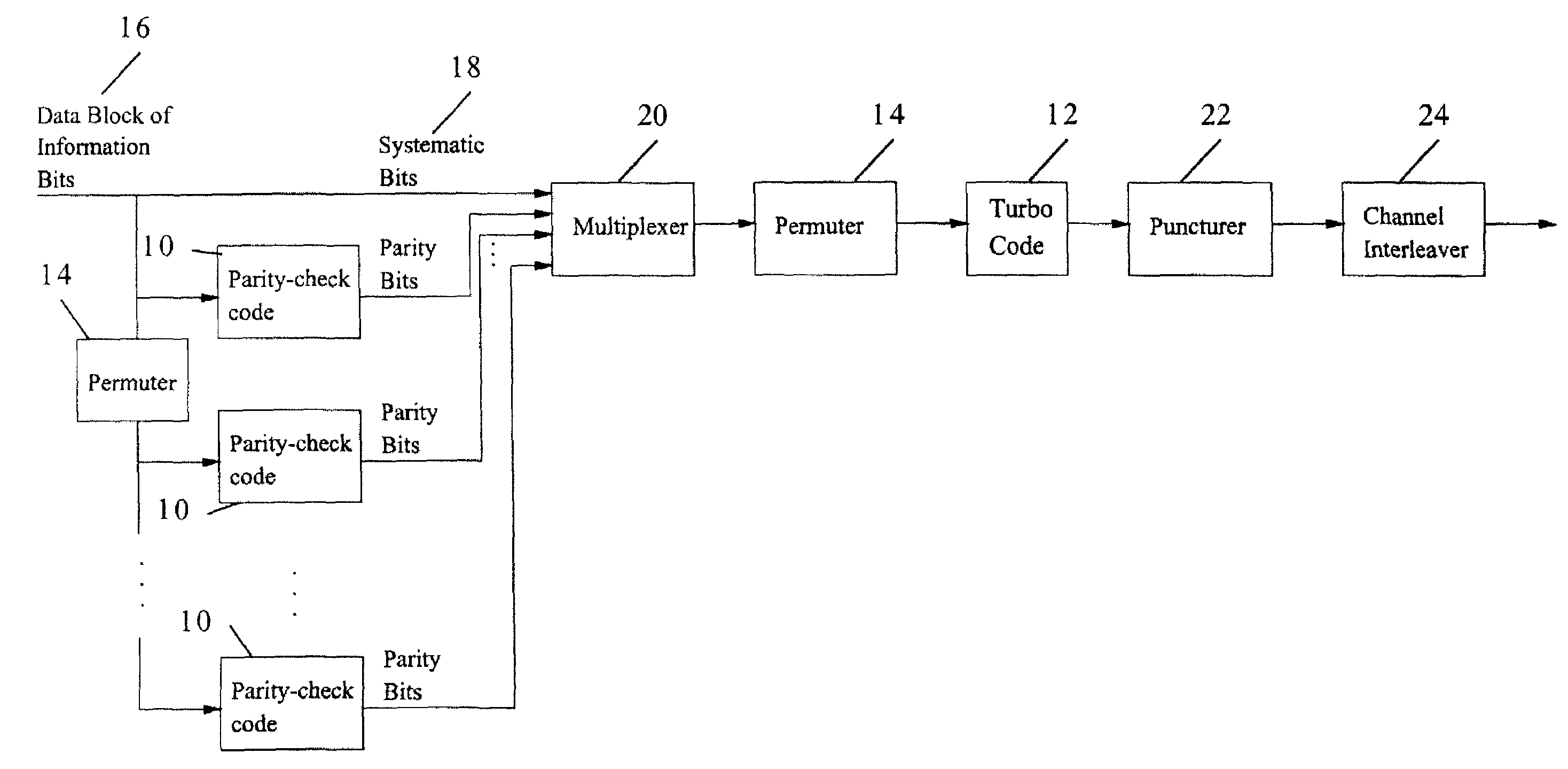Method and coding means for error-correction utilizing concatenated parity and turbo codes
a technology of concatenated parity and error correction, applied in the field of error correction schemes, can solve the problems of coding gain, significant end-to-end delay, and error rate achieved, and the complexity of turbo codes can create significant end-to-end delays
- Summary
- Abstract
- Description
- Claims
- Application Information
AI Technical Summary
Benefits of technology
Problems solved by technology
Method used
Image
Examples
Embodiment Construction
[0036]The present invention solves the problems in the art by providing a system and method for a novel error-correcting code that uses concatenated parity-check codes as outer codes and parallel concatenated convolutional codes (turbo codes) as inner codes.
[0037]Reference will now be made in detail to the embodiments consistent with the invention, examples of which are illustrated in the accompanying drawings. Wherever possible, the same reference numerals used throughout the drawings refer to the same or like parts.
I. Serially Concatened Inner Turbo Code and Outer Parity-Check Encoders
[0038]FIG. 1 shows a preferred encoding scheme according to the present invention. In this encoding scheme, one or more parity-check codes 10 are used as outer codes in a hybrid serial / parallel concatenated coding scheme. The combination of all the outer parity-check codes 10 (including the systematic bits 18) is serially concatenated with an inner code turbo code 12, such as the rate 1 / 3 turbo code ...
PUM
 Login to View More
Login to View More Abstract
Description
Claims
Application Information
 Login to View More
Login to View More - R&D
- Intellectual Property
- Life Sciences
- Materials
- Tech Scout
- Unparalleled Data Quality
- Higher Quality Content
- 60% Fewer Hallucinations
Browse by: Latest US Patents, China's latest patents, Technical Efficacy Thesaurus, Application Domain, Technology Topic, Popular Technical Reports.
© 2025 PatSnap. All rights reserved.Legal|Privacy policy|Modern Slavery Act Transparency Statement|Sitemap|About US| Contact US: help@patsnap.com



